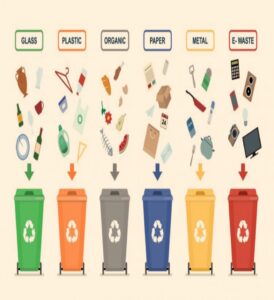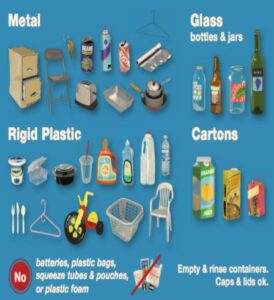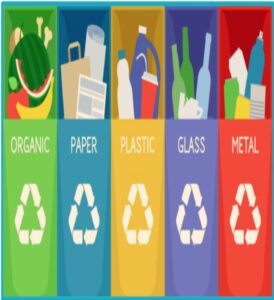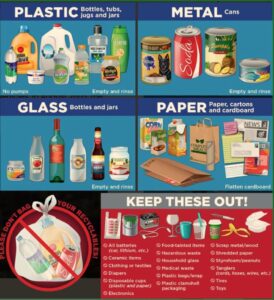How to Recycle Properly: A Step-by-Step Guide to Recycling Right
Last Updated: April 5, 2025
Introduction: Why Recycling Matters More Than Ever
In a world where landfills are overflowing and climate change continues to accelerate, recycling properly has never been more important. Did you know that the average American generates over 4.9 pounds of waste per day? Only about a third of that gets recycled.
Recycling isn’t just about tossing bottles into a bin—it’s about doing it right. Improper recycling can actually harm the environment and cost cities millions in contamination fees. That’s why understanding how to recycle properly is key to making a real difference.
In this comprehensive guide, we’ll walk you through everything you need to know about proper recycling—from sorting techniques and local guidelines to avoiding common mistakes and maximizing your impact.
Section 1: The Problem with Improper Recycling
While many people have good intentions when they recycle, incorrect practices can do more harm than good. Here’s what happens when recycling isn’t done properly:
- Contamination: Non-recyclables mixed with recyclables can ruin entire batches.
- Higher Costs: Municipalities spend extra money sorting out garbage from recycling bins.
- Environmental Harm: Contaminated materials often end up in landfills or incinerators.
What Is “Wishcycling”?
“Wishcycling” refers to the practice of placing non-recyclable items in recycling bins in hopes they’ll be processed. Unfortunately, this increases contamination rates and slows down the recycling process.
According to the Recycling Partnership, up to 25% of what’s placed in U.S. recycling bins doesn’t belong there.
Section 2: How to Recycle Properly – A Step-by-Step Guide
Ready to make sure your recycling efforts count? Follow these steps to recycle properly and help keep your community clean and sustainable.
Step 1: Know Your Local Recycling Rules
Recycling rules vary by city and state. Some accept glass; others don’t. Some require you to rinse containers; others don’t. Always check with your local waste management provider for the most accurate information.
Step 2: Clean and Dry Recyclables
Food residue can contaminate other recyclables. Rinse out jars, bottles, and cans before placing them in the bin. Also, make sure items are dry—wet paper can’t be recycled.
Step 3: Sort Correctly
Separate your recyclables by type if required. Common categories include:
- Paper and cardboard
- Glass bottles and jars
- Plastics #1–#7 (check local guidelines)
- Metal cans
Step 4: Avoid Wishcycling
If you’re unsure whether something is recyclable, it’s better to throw it away than risk contaminating an entire batch. When in doubt, look it up!
Step 5: Recycle Electronics and Hazardous Waste Separately
Batteries, old phones, light bulbs, and chemicals shouldn’t go in regular recycling bins. Instead, take them to designated e-waste or hazardous material drop-off locations.
Section 3: Best Practices for Effective Recycling
To get the most out of your recycling routine, follow these expert-approved tips:
- Flatten cardboard boxes to save space and reduce trips to the curb.
- Remove bottle caps unless your local program allows them.
- Buy products with recyclable packaging to support sustainable brands.
- Use reusable bags and containers to cut down on single-use plastics.
- Participate in curbside programs and community clean-up events.
Recycling at Work and School
Extend your recycling habits beyond the home. Encourage coworkers and classmates to set up clear labeling systems and provide separate bins for different materials.
Section 4: Common Recycling Mistakes to Avoid
Even well-meaning recyclers make mistakes. Here are some of the most common ones—and how to fix them:
- Mistake: Putting plastic bags in the bin
Solution: Return them to grocery store collection bins. - Mistake: Recycling pizza boxes with food grease
Solution: Discard greasy parts only; recycle the clean top half. - Mistake: Tossing small plastics like bottle lids
Solution: Check if your area accepts them; otherwise, toss in the trash. - Mistake: Not checking labels
Solution: Look for recycling symbols and numbers inside the triangle.
Section 5: Expert Insights and Real-World Examples
We reached out to several environmental experts to share their thoughts on how individuals can recycle properly and make a measurable impact.
“Proper recycling starts with education. Communities that invest in clear signage and outreach see higher recycling rates and less contamination.”
— Dr. Maria Lopez, Environmental Scientist
Case Study: San Francisco’s Zero Waste Initiative
San Francisco aims to achieve zero waste by 2030. Through aggressive composting, public education, and strict recycling laws, the city diverts over 80% of its waste from landfills—the highest rate in the U.S.
Frequently Asked Questions (FAQs)
Conclusion: Small Steps Lead to Big Changes
Learning how to recycle properly is one of the easiest ways to protect the planet and conserve resources. By following local guidelines, avoiding wishcycling, and staying informed, you can ensure your efforts make a real difference.
Every bottle rinsed, every lid removed, and every piece of paper flattened contributes to a cleaner, healthier future. Start today—and encourage others to join you.
Have questions or tips about recycling? Share them in the comments below!
Want to learn more about reducing household waste? Check out our post on how to reduce plastic use at home.
You might also enjoy our guide to zero waste living tips.
This article references data from the U.S. EPA and the Recycling Partnership.




